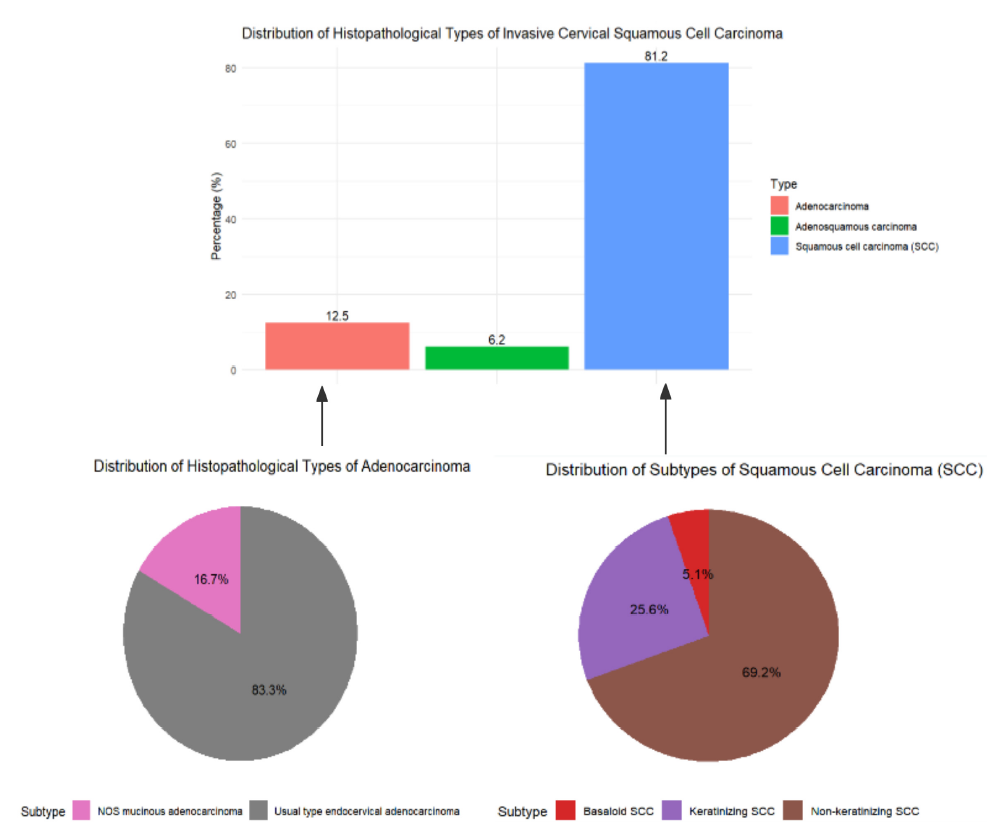Significant Associations Between Age, Menstrual Status, and Histopathological Types of Cervical Carcinoma in Vietnamese Patients: Insights from a Retrospective and Prospective Analysis
DOI:
https://doi.org/10.15419/bmrat.v11i6.897Keywords:
Cervical cancer, Cervical carcinoma, Squamous cell carcinoma, Adenocarcinoma, HPV, Vietnam, Age, Menstrual status, Histopathological typesAbstract
Introduction: Cervical cancer, predominantly associated with high-risk Human Papillomavirus (HPV) types 16 and 18, presents a substantial public health challenge, particularly impacting women in low and middle-income countries. This study aims to address a vital knowledge gap by examining the relationship between age, menstrual status, and histopathological types of cervical carcinoma in Vietnamese patients.
Methods: The research was conducted at a major provincial public maternity and pediatric hospital in Vietnam from August 2019 to July 2022. A total of 48 adult female patients with histopathologically confirmed invasive cervical carcinoma were included in this combined retrospective and prospective observational study. Demographic and clinical data were collected and analyzed using univariate analysis to determine the associations between different factors and histopathological types. Statistical significance was set at p < 0.05, with odds ratios (ORs), 95% confidence intervals (CIs), and p-values calculated accordingly.
Results: The results revealed that squamous cell carcinoma (SCC) was the most common histopathological type (81.2%), followed by adenocarcinoma (12.5%) and adenosquamous carcinoma (6.2%). Within the SCC subtype, non-keratinizing SCC was the most prevalent (69.2%). Individuals aged 50 years and older had significantly higher odds of being diagnosed with SCC compared to those aged 39 years or younger (OR = 10.40, 95% CI: 1.48-73.00, p = 0.02). Menopausal individuals also had significantly increased odds of SCC compared to those who were menstruating (OR = 10.35, 95% CI: 1.18-90.95, p = 0.04).
Conclusion: These findings underscore the significant correlations between age, menstrual status, and the prevalence of SCC in Vietnamese patients, underscoring the importance of targeted public health initiatives. The study provides crucial insights that could inform the development of effective prevention and management strategies in Vietnam and similar settings.

Published
Issue
Section
License
Copyright The Author(s) 2017. This article is published with open access by BioMedPress. This article is distributed under the terms of the Creative Commons Attribution License (CC-BY 4.0) which permits any use, distribution, and reproduction in any medium, provided the original author(s) and the source are credited.
